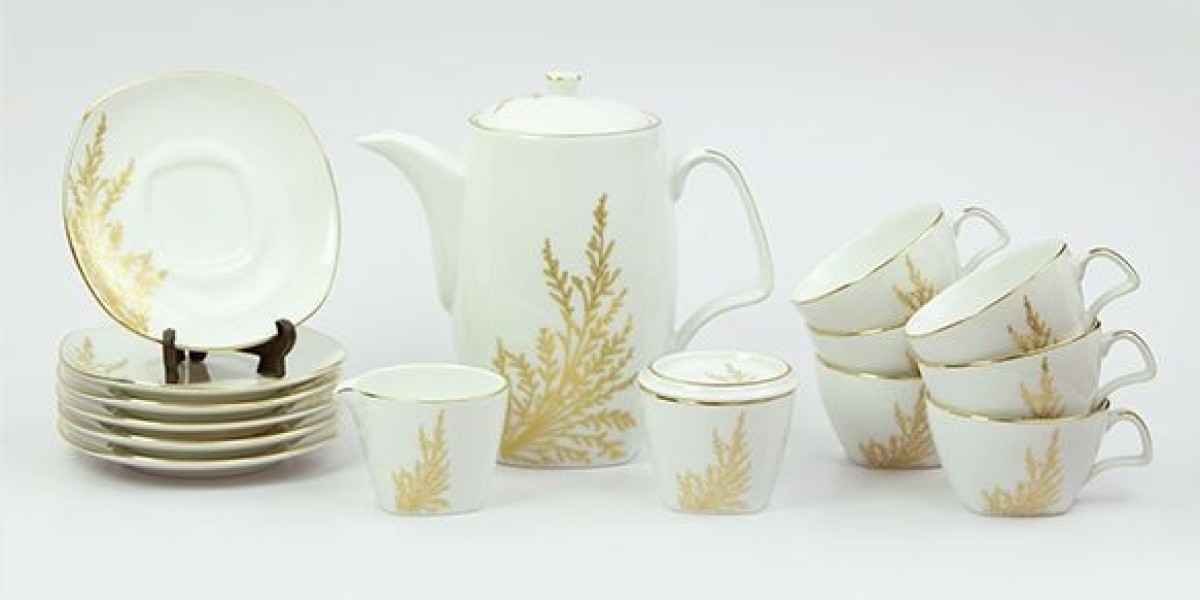Porcelain is a type of ceramic material that has been highly valued for its strength, durability, and beauty. It is very popular among consumers since porcelain items make great employee gifts, corporate gifts in Sri Lanka and housewarming gifts, as they have the best drinkware sets, dinnerware and other items. There are several types of porcelain, each with unique characteristics and uses:
- Hard-Paste Porcelain: This is the traditional type of porcelain that originated in China and was later adopted in Europe. It is made from a mixture of kaolin (a type of clay), feldspar, and quartz. Hard-paste porcelain is known for its durability and is often used for fine china and figurines.
- Soft-Paste Porcelain: Also known as "artificial porcelain," this type was developed in Europe in an attempt to replicate hard-paste porcelain before its composition was fully understood. Soft-paste porcelain includes ingredients like clay, glass, and lead, which make it less durable than hard-paste porcelain but often allows for more decorative glazes and finishes.
- Bone China: This type of porcelain is made from a mixture of bone ash, feldspar, and kaolin. It is known for its whiteness, translucency, and strength. Bone china is often used for high-quality tableware and fine china.
- Stoneware Porcelain: This type of porcelain is fired at a higher temperature than other types, resulting in a denser and more durable material. It is often used for functional items like cookware and large-scale pottery.
- Porcelain Enamel: This is a type of coating applied to metals or other materials to provide a durable, glass-like finish. It is commonly used in applications like cookware, appliances, and bathtubs.
Each type of porcelain has its own distinct properties and uses, making it suitable for a wide range of applications from everyday items to fine art.
How to check if porcelain is of good quality
To determine if porcelain is of good quality, consider these factors:
- Appearance and Finish:
- Smooth Surface: High-quality porcelain should have a smooth, even surface without any cracks, chips, or blemishes.
- Glaze: The glaze should be even and well-applied, with no drips, runs, or inconsistencies.
- Sound: Gently tap the porcelain with a utensil or your fingernail. High-quality porcelain produces a clear, resonant "ping" sound, while lower-quality porcelain may sound dull.
- Weight: Good-quality porcelain is usually heavier due to its density. If it feels light or flimsy, it might be lower quality.
- Translucency: Hold the porcelain up to a bright light or against a white background. High-quality porcelain is often slightly translucent, allowing light to pass through, especially around the edges.
- Finish and Colour: Check for uniformity in colour and pattern. High-quality porcelain should have consistent colour and design throughout.
- Thickness: The porcelain should have a consistent thickness without any thin or weak spots.
- Manufacturing Marks: Look for any manufacturer’s marks or stamps. Reputable brands often produce higher quality porcelain and provide information about their products.
- Craftsmanship: Examine the craftsmanship, including the precision of any decorative elements. High-quality porcelain will have finely detailed and well-executed designs.
By paying attention to these aspects, you can better assess the quality of porcelain and determine if it meets your standards.







